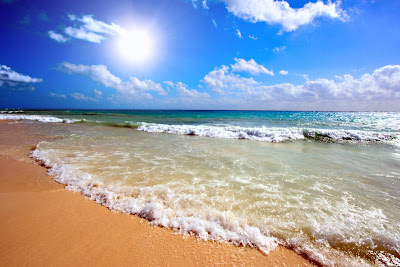English language is the most notorious for adapting to the fast changes in the world. New words are added and get embedded in the regular lingo of the young gen now a days.
With a list of new words coined recently, we may be speaking this way in a few years to come –
“Me being
funemployed decided to go for a
daycation with a friend who is a
freemale to my sis’s place as she was in a
sandwich generation. On entering her house we paid respects to her FIL who was scanning few
snailmails and her MIL who was engrossed with an
outernet. Her teen daughter an
infomania was wearing a
hoodie in April, calling herself a
fashionista, was applying a
nail tat with her eyes glued to her
netbook. My sis a
sofalizer was busy with her laptop and her little one had already become a
cot potato.
We had some chicken biryani for lunch as we were
flexitarians and spent most of the time catching up with the
buzz under the
jumbrella in her lawn sipping on an
alcopop. We left her place late evening but could not meet my BIL as he had become a member of the
overworking class as his company was
decruiting since the year beginning.
My sis assured us that she’d make it for the
staycation we were planning with few more friends at an
agritourist place and said she’d send her kids for a
greycation during the
winterval. We reached home safe without being
carjacked or encountering a
flashmob en route.”
Dear
netizen, if you have difficulty in deciphering the content of the passage refer the key below:-
Agritourism A form of tourism in which tourists stay on farms or in agricultural villages, and often participate in farm activities.
Alcopop Fruit drinks fortified with alcohol, designed and marketed to appeal to young people.
Buzz Excited interest or attention surrounding, for example, a new invention, a recent event or something that has become fashionable.
Carjacking- Blend of 'car' and 'hijacking', When a car driver is forced to give up his vehicle or drive to a
destination designated by the attacker.
Cot potato Very young child who spends a lot of time watching television. (cot = a baby's bed)
Daycation A trip or short vacation which lasts only one day - daycationers do not stay away overnight.
Decruitment Euphemism for laying-off staff or downsizing a company.
Fashionista Person who dresses according to the latest fashion trends.
Flash mob A crowd that gathers in a pre-determined place, performs an action then disperses very quickly. The mob is not told exactly what to do until just before the event.
Flexitarian A vegetarian who sometimes eats meat or fish
Freemale A woman who is happy to stay single and independent so that she can do what she wants when she wants.
Funemployed A blend of 'fun' and 'unemployed'.Someone who enjoys not having a job because they have more time for leisure and fun activities.
Greycation Going on holiday or vacation with grandparents in order to reduce the cost.
Hoody or hoodie A person, especially a youth, wearing a hooded top.
Infomania Constantly checking and responding to email and text messages.
Jumbrella Blend of 'jumbo' and 'umbrella'. Very large umbrella set above tables outdoors at a coffee shop,
pub or restaurant.
Nail tat A temporary tattoo applied to the nails.
Netbook Small laptop computer which weighs less than 3 pounds and has a 7 to 10 inch screen.
Netizen Blend of 'internet' and 'citizen'. A person who spends an excessive amount of time on the internet
Overworking class A segment of today's working population where there is a desire or need to work long hours.
Outernet Traditional media (newpapers, magazines, radio, television) as opposed to the internet.
Sandwich generation A generation of people who care for the needs of their children as well as those of their own elderly parents.
Snail mail The standard system of delivering mail which is very slow in contrast to electronic mail.
Sofalise/sofalize Stay home and use the internet, phone or other electronic device to communicate with people (social networking, chatting, tweeting, etc.), rather than go out and meet them face to face.
Staycation A vacation in which you stay at home and relax or visit places close to where you live.
Winterval Blend of 'winter' and 'festival'. A festival that takes place in winter.

.jpg)

.jpg)

.jpg)








.jpg)



.jpg)







